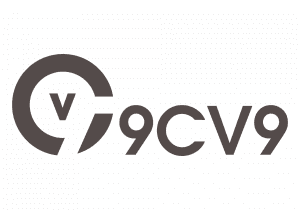Key Takeaways
- Call tracking software adoption is rising in 2025, driven by the need for accurate attribution, customer insights, and ROI optimization.
- AI and machine learning are transforming call analytics, enabling features like sentiment analysis, call scoring, and predictive insights.
- Privacy compliance and integration capabilities are top priorities, with businesses seeking secure, omnichannel-ready tracking solutions.
In the rapidly evolving landscape of digital marketing and customer experience, call tracking software has emerged as a cornerstone technology for businesses looking to maximize their return on investment (ROI), enhance lead attribution, and gain a deeper understanding of customer behavior.
As we navigate through 2025, the demand for data-driven insights and omnichannel analytics continues to surge, positioning call tracking solutions at the heart of strategic decision-making across industries such as healthcare, real estate, automotive, legal, e-commerce, and more.
Also, read our top guide on the Top 10 Best Call Tracking Software in 2025.

Call tracking software has matured beyond its traditional role of simply recording inbound calls.
Today, it encompasses sophisticated features like dynamic number insertion (DNI), multi-touch attribution, keyword-level tracking, CRM integrations, artificial intelligence (AI)-powered analytics, and real-time reporting.
These advancements empower marketers to track the full customer journey, attribute phone leads to specific campaigns, and uncover actionable intelligence that drives revenue growth.
With the proliferation of mobile search and voice-based customer interactions, tracking offline conversions has become as critical as online ones—cementing call tracking’s role as a pivotal bridge between the digital and physical worlds.
According to market research, the global call tracking software market is experiencing robust growth, fueled by the increasing importance of performance marketing, data privacy compliance, and the need for granular attribution across digital channels.
Businesses are under growing pressure to justify marketing spend, and in this environment, call tracking delivers the transparency and accuracy required to evaluate campaign effectiveness across platforms like Google Ads, Facebook, SEO, and email marketing.
In 2025, AI and machine learning are further transforming the capabilities of call analytics, enabling predictive insights, automated call scoring, sentiment analysis, and personalized customer experiences.
Moreover, as privacy regulations like GDPR, CCPA, and other global frameworks become more stringent, call tracking providers are evolving to offer privacy-first solutions with features such as consent management, anonymized data processing, and secure call recording.
The competitive landscape is also intensifying, with both established players and emerging startups innovating rapidly to meet the evolving needs of enterprises, small businesses, and agencies alike.
This comprehensive blog compiles the top 80 call tracking software statistics, data points, and industry trends that define the state of the market in 2025.
Whether you’re a marketer, sales leader, technology strategist, or business owner, these insights will help you understand where the industry stands today, where it’s headed, and how your organization can leverage call tracking technologies to achieve greater efficiency, visibility, and customer satisfaction.
From adoption rates and budget allocations to technology trends and industry-specific usage, this data-driven guide is your go-to resource for mastering call tracking in 2025. Let’s dive into the numbers and narratives shaping one of the most crucial tools in modern marketing and communication.
Before we venture further into this article, we would like to share who we are and what we do.
About 9cv9
9cv9 is a business tech startup based in Singapore and Asia, with a strong presence all over the world.
With over nine years of startup and business experience, and being highly involved in connecting with thousands of companies and startups, the 9cv9 team has listed some important learning points in this overview of the Top 80 Call Tracking Software Statistics, Data & Trends in 2025.
If your company needs recruitment and headhunting services to hire top-quality employees, you can use 9cv9 headhunting and recruitment services to hire top talents and candidates. Find out more here, or send over an email to [email protected].
Or just post 1 free job posting here at 9cv9 Hiring Portal in under 10 minutes.
Top 80 Call Tracking Software Statistics, Data & Trends in 2025
Market Size & Growth
- In 2024, the global call tracking software market was valued at approximately $8.84 billion, reflecting its significant role in marketing attribution and customer engagement analytics worldwide.
- Projections indicate that this market will grow to an estimated $9.82 billion in 2025, demonstrating a robust compound annual growth rate (CAGR) of around 11.0% as businesses increasingly adopt call tracking solutions to optimize marketing ROI.
- Looking further ahead, industry analysts forecast that the global call tracking software market will reach a valuation of $14.7 billion by the year 2029, maintaining a steady CAGR of approximately 10.6% between 2024 and 2029.
- The inbound call tracking software segment alone experienced growth from $1.96 billion in 2023 to $2.36 billion in 2024, representing a remarkable compound annual growth rate of 20.5%, driven by rising demand for inbound marketing attribution.
- Forecasts suggest that the inbound call tracking software market will continue its rapid expansion to achieve a market size of $5.01 billion by 2028, growing at a compound annual growth rate of 20.8% over the five-year period.
- The widespread adoption of smartphones plays a crucial role in driving call tracking market growth, with mobile connections in the United Kingdom reaching 71.8 million in 2022 and smartphone penetration expected to reach 95% by 2025.
Market Drivers & Trends
- One of the primary factors propelling the growth of call tracking software is the increasing emphasis on optimizing customer experience (CX), as businesses seek to better understand and engage their customers through data-driven insights.
- The growing demand for data-driven decision-making across marketing and sales teams is fueling the adoption of call tracking software, enabling organizations to precisely attribute calls to specific campaigns and channels.
- As companies place greater importance on measuring return on investment (ROI) for their marketing efforts, call tracking solutions have become indispensable tools for tracking and analyzing call-related conversions.
- Regulatory compliance requirements, such as data privacy laws and call recording regulations, are also contributing to the market’s expansion by necessitating sophisticated call tracking and monitoring capabilities.
- The rapid expansion of small and medium-sized enterprises (SMEs) worldwide has led to increased demand for affordable and scalable call tracking solutions tailored to the needs of growing businesses.
- Emerging trends in the call tracking market include the integration of artificial intelligence (AI) powered analytics and the ability to track customer interactions across multiple channels, enhancing marketing attribution accuracy.
- Advanced call routing technologies and voice recognition capabilities are gaining traction within call tracking platforms, allowing businesses to personalize customer interactions and improve call handling efficiency.
- Features that enable customization and personalization of call tracking data and reports are becoming increasingly important as marketers seek more granular insights into campaign performance.
- Integration of call tracking software with customer relationship management (CRM) systems is a significant growth factor, as it allows seamless synchronization of call data with sales and marketing workflows.
- The shift in digital marketing strategies towards performance-based models has boosted the adoption of call tracking software, as marketers require precise attribution to optimize budget allocation.
- The demand for real-time analytics and reporting capabilities is rising among marketers who want immediate insights into call performance and customer behavior to make faster decisions.
- Increased focus on lead generation and conversion optimization has enhanced the adoption of call tracking software as a critical tool for identifying high-value prospects and channels.
- The rapid adoption of smartphones and increased mobile internet access globally continue to propel the call tracking software market by expanding the volume of call interactions to be tracked.
- Integration of augmented reality (AR) and virtual reality (VR) technologies with call tracking software is an emerging trend that promises to create immersive customer engagement experiences in the near future.
- The growing use of smart home devices and Internet of Things (IoT) technologies is opening new avenues for call tracking software to capture multi-device customer interactions and provide unified analytics.
Usage & Adoption Statistics
- By 2025, it is expected that 95% of the UK population will own smartphones, significantly increasing the relevance and utility of call tracking software for marketers targeting mobile users.
- Businesses are increasingly assigning unique phone numbers to individual marketing campaigns, allowing them to precisely attribute inbound calls to specific advertising efforts and channels.
- Call tracking software enables detailed analysis of call duration, caller location, and keyword-level attribution, providing marketers with comprehensive data to optimize their campaigns.
- Multi-channel attribution, which tracks customer interactions across phone calls, web visits, and other touchpoints, has become a standard feature in leading call tracking platforms.
- Dynamic number insertion (DNI) technology is widely used by call tracking providers to monitor online interactions by dynamically displaying different phone numbers based on visitor source or behavior.
- AI-powered conversation analytics are increasingly employed to analyze call content, helping businesses better understand customer intent and improve service quality.
- Automation in call routing enhances customer experience personalization by directing callers to the most appropriate agent or department based on predefined criteria or AI analysis.
- Call tracking software commonly integrates with popular marketing platforms such as Google Analytics and Salesforce, enabling unified data management and reporting.
- Call recording and monitoring features have become standard offerings in most call tracking solutions, supporting quality control and agent training initiatives.
- Virtual phone systems that incorporate call tracking capabilities are increasingly adopted by small and medium-sized enterprises seeking affordable and scalable communication solutions.
Platform-Specific Quantitative Insights
- CallRail, a leading call tracking platform, offers keyword-level attribution and call scheduling features that help marketers optimize campaign performance and manage inbound calls efficiently.
- Invoca utilizes artificial intelligence to analyze call conversations in real-time, enabling marketers to optimize their marketing ROI by understanding caller intent and behavior.
- Phonexa provides a comprehensive suite of eight proprietary tools for call tracking and analytics, supporting advanced marketing attribution and performance measurement.
- Infinity Call Tracking supports dynamic number insertion and detailed caller demographics reporting, allowing businesses to gain granular insights into their inbound call traffic.
- Ozonetel CloudAgent supports multichannel interactions, including voice, email, chat, and social media, offering a unified platform for customer engagement and call tracking.
- 800.com offers call forwarding and voicemail services combined with basic analytics, catering primarily to businesses seeking simple call management solutions.
- HubSpot Sales Hub integrates call tracking with CRM and sales automation, enabling sales teams to track call activity alongside customer data for improved pipeline management.
- Sales engagement platforms like Salesloft and Outreach provide sales teams with call tracking capabilities embedded within broader engagement workflows.
- OpenPhone offers virtual phone systems with integrated call tracking features designed specifically for small businesses and startups.
- CallTrackingMetrics provides multi-channel attribution and comprehensive analytics, allowing marketers to measure the impact of calls alongside other digital marketing channels.
- Aircall supports CRM integration and scalable call tracking solutions, making it suitable for businesses of various sizes looking to unify communication and analytics.
- Freshsales combines call tracking with sales automation and CRM functionalities, enabling seamless tracking of calls within the sales process.
- MightyCall targets affordability by offering call tracking and virtual phone system features designed for small businesses with limited budgets.
- Keap offers CRM and marketing automation tools but does not provide native call tracking features, requiring integration with third-party platforms for call analytics.
Regional & Demographic Data
- Mobile connections in the United Kingdom reached a total of 71.8 million in 2022, reflecting widespread mobile device usage that supports the growth of call tracking software.
- The smartphone penetration rate in the UK is projected to reach 95% by 2025, indicating near-saturation levels that further enhance the importance of call tracking for mobile marketing attribution.
- The United States represents a significant segment of the global call tracking market, as evidenced by the presence of numerous major call tracking platforms headquartered and widely used there.
- Small and medium-sized enterprises (SMEs) across the globe are increasingly incorporating call tracking software into their marketing technology stacks to improve campaign effectiveness and customer engagement.
- Emerging markets are experiencing rapid mobile adoption, which is contributing to the expansion of the call tracking software market by increasing the volume of trackable inbound calls.
Financial & Pricing Insights
- Call tracking software pricing models vary widely, ranging from straightforward subscription-based plans to custom pricing structures tailored to enterprise needs and call volumes.
- Higher-tier subscription plans typically offer advanced analytics, customization options, and integration capabilities that are not available in basic packages.
- While some call tracking platforms provide free trials or demos, most do not offer completely free versions, requiring businesses to invest in paid plans to access full functionality.
- Pricing structures for call tracking software can be complex and often require expert consultation or onboarding assistance to optimize usage and cost-effectiveness.
- Affordable plans targeted at small businesses are available from many providers, but these plans may lack advanced features such as AI analytics or multi-channel attribution.
Technology & Features Adoption Rates
- The adoption of AI-powered analytics within call tracking software is increasing rapidly, enabling more sophisticated analysis of call content and customer intent.
- Multi-channel tracking capabilities, which allow marketers to attribute calls alongside other digital interactions, have become a standard expectation for modern call tracking platforms.
- Integration of voice recognition technology into call tracking solutions is growing, providing enhanced capabilities for transcription, sentiment analysis, and automated call scoring.
- Real-time data transfer and live caller information features are increasingly utilized by businesses to optimize conversion rates and improve customer engagement during calls.
- Interactive Voice Response (IVR) systems are commonly integrated with call tracking software to automate call routing and improve customer service efficiency.
- Call scoring and behavior analytics tools are widely used to evaluate marketing effectiveness by assessing the quality and outcome of inbound calls.
- Predictive modeling features are emerging in advanced call tracking suites, allowing marketers to forecast call outcomes and optimize campaign targeting.
- Automation of outbound calling based on web prospect behavior is a growing feature, enabling proactive engagement with potential customers identified through online activity.
- Integration with marketing automation platforms is rising, allowing seamless data flow between call tracking software and broader marketing workflows.
- Dynamic number insertion (DNI) technology is widely adopted for precise marketing attribution by dynamically displaying phone numbers based on visitor source or campaign.
Market Challenges & Limitations (Quantitative Aspects)
- Some platforms report a steep learning curve for inexperienced marketers, with onboarding times ranging from several days to weeks before full proficiency is achieved.
- The majority of call tracking software solutions are subscription-based or custom priced, with limited availability of free versions, which can be a barrier for smaller businesses.
- Pricing for advanced features such as AI analytics and multi-channel attribution can be prohibitively high for small businesses or startups with limited budgets.
- Complexity in setup and customization is reported for advanced call tracking solutions, often requiring dedicated technical support or consulting services.
- Some affordable call tracking platforms have limited scalability, restricting their usefulness as businesses grow and require more sophisticated features.
Call Tracking Impact & Effectiveness
- Call tracking software enables businesses to attribute inbound calls to specific marketing campaigns, thereby improving the accuracy of ROI measurement and budget allocation.
- Companies utilizing call tracking report improved lead generation effectiveness by identifying which campaigns and keywords drive the highest quality calls.
- Call tracking data supports more comprehensive customer journey analysis, allowing marketers to refine their strategies based on detailed interaction insights.
- AI-powered analytics within call tracking platforms have been shown to improve conversion rates by accurately identifying customer intent during calls.
- Multi-channel tracking provides marketers with holistic insights into customer interactions across phone, web, and other digital channels, enhancing attribution accuracy.
- Real-time analytics capabilities enable marketers to make faster campaign adjustments, leading to improved overall marketing performance and efficiency.
- Call recording and scoring features enhance agent performance and training outcomes by providing actionable feedback based on call quality assessments.
- Integration of call tracking data with CRM systems increases sales team efficiency by linking call interactions directly to customer records and sales pipelines.
Forecast & Future Outlook
- The global call tracking software market is expected to maintain a compound annual growth rate of approximately 10.6% to 11% through the year 2029, driven by ongoing demand for marketing attribution solutions.
- The inbound call tracking software segment is forecasted to grow at an even faster pace, with a compound annual growth rate exceeding 20% through 2028, reflecting increasing emphasis on inbound marketing channels.
- Artificial intelligence and automation technologies will continue to be the primary innovation drivers in call tracking software development, enhancing analytics and operational efficiency.
- Market expansion will be supported by growing digital marketing budgets worldwide and the increasing adoption of data-driven marketing approaches by businesses of all sizes.
- The continued increase in smartphone penetration globally will sustain demand for call tracking solutions by expanding the volume and complexity of trackable customer interactions.
Conclusion
As we conclude this comprehensive exploration of the top 80 call tracking software statistics, data, and trends in 2025, one thing is abundantly clear: call tracking is no longer a peripheral tool reserved for niche marketing teams—it is now a strategic necessity for businesses that value performance, personalization, and precision. The data presented throughout this blog underscores the growing importance of call analytics in driving informed marketing decisions, improving customer journeys, and maximizing return on advertising spend.
In 2025, call tracking has evolved into a powerful, AI-driven technology that supports businesses in achieving full-funnel attribution, enabling them to tie every inbound call to its originating marketing source, campaign, keyword, or touchpoint. With the customer journey becoming increasingly fragmented across devices and channels, having accurate call data is critical to understanding behavior, measuring success, and optimizing every customer interaction. Whether through dynamic number insertion (DNI), real-time reporting, or CRM integrations, call tracking software provides the insights required to stay competitive in a data-driven economy.
What the statistics show is a strong and sustained trajectory of adoption and innovation across sectors. Marketers are investing more heavily in call tracking platforms, not just to capture data, but to unlock revenue opportunities, streamline sales processes, and improve service delivery. From small businesses to global enterprises, the ability to track and analyze phone calls—traditionally a blind spot in marketing analytics—has become an integral part of broader digital transformation efforts.
We also see a notable shift toward AI-powered automation, voice analytics, and compliance-friendly solutions that cater to evolving customer expectations and data protection regulations. Features like call transcription, sentiment analysis, call scoring, and intent detection are redefining how organizations approach customer engagement. At the same time, the emphasis on security, data governance, and privacy compliance ensures that these powerful tools can be deployed ethically and responsibly in regulated environments.
Moreover, the statistics reveal that call tracking is no longer confined to marketing use cases alone. Sales teams, customer support departments, healthcare professionals, real estate agents, and even financial institutions are leveraging call tracking platforms to gain insights that inform everything from lead qualification and staffing decisions to customer satisfaction and operational efficiency.
As we look ahead, the call tracking industry is expected to grow even more sophisticated, integrating deeper with omnichannel marketing stacks, leveraging predictive analytics, and supporting hyper-personalized communication strategies. Businesses that prioritize intelligent call tracking now will be well-positioned to gain a competitive edge by transforming raw call data into actionable intelligence.
In summary, the insights and trends outlined in this blog are more than just numbers—they are indicators of a transformative shift in how businesses connect with customers, attribute value to marketing efforts, and harness technology for measurable growth. If your organization hasn’t yet embraced the full capabilities of modern call tracking, now is the time to act. The future belongs to businesses that can seamlessly integrate voice analytics into their marketing, sales, and service ecosystems—delivering better outcomes, smarter decisions, and more meaningful customer interactions.
Stay ahead of the curve by continuously monitoring emerging trends, evaluating new call tracking tools, and aligning your strategy with the latest advancements in voice and data technology. The opportunities in 2025 are vast—and the data proves it.
If you find this article useful, why not share it with your hiring manager and C-level suite friends and also leave a nice comment below?
We, at the 9cv9 Research Team, strive to bring the latest and most meaningful data, guides, and statistics to your doorstep.
To get access to top-quality guides, click over to 9cv9 Blog.
People Also Ask
What is call tracking software?
Call tracking software helps businesses track, record, and analyze phone calls to determine which marketing channels drive inbound calls and conversions.
Why is call tracking important in 2025?
In 2025, call tracking is essential for attributing ROI, understanding customer journeys, and improving marketing performance across channels.
How does call tracking work?
It assigns unique phone numbers to campaigns, tracking which source generates the call and capturing data like caller info, duration, and outcome.
What are the key trends in call tracking software for 2025?
AI-driven analytics, real-time reporting, multi-touch attribution, and privacy-focused features are key trends in 2025.
Which industries benefit most from call tracking?
Industries like healthcare, real estate, legal, automotive, and e-commerce benefit significantly from call tracking insights and attribution.
How is AI used in call tracking software?
AI is used for call transcription, sentiment analysis, automated scoring, and predictive insights to enhance customer interactions.
What is dynamic number insertion (DNI)?
DNI dynamically displays unique phone numbers on websites based on the user’s source, allowing accurate attribution of each call.
How does call tracking improve marketing ROI?
It identifies high-performing campaigns, allowing marketers to allocate budgets efficiently and eliminate underperforming channels.
Can call tracking be integrated with CRMs?
Yes, most call tracking tools integrate with CRMs to sync call data, lead information, and customer interactions for better sales alignment.
Is call tracking software compliant with privacy laws?
Leading solutions offer GDPR, CCPA, and other compliance features like call recording consent and data anonymization.
What types of businesses should use call tracking?
Any business that relies on inbound calls—especially for lead generation or customer service—should use call tracking software.
How does call tracking help in lead attribution?
It links each call to its marketing source, helping businesses understand which campaigns and keywords drive phone leads.
What is multi-touch attribution in call tracking?
Multi-touch attribution tracks all customer interactions across channels before a call, offering a complete view of the conversion path.
How accurate is call tracking data?
With dynamic numbers and detailed call analytics, modern tools offer highly accurate attribution and performance tracking.
Can call tracking help improve customer service?
Yes, by analyzing call recordings and transcripts, businesses can identify issues, train staff, and enhance service quality.
What are the top features to look for in call tracking software?
Look for DNI, AI analytics, CRM integrations, multi-channel support, real-time dashboards, and privacy compliance.
How does call tracking affect SEO?
Properly implemented DNI ensures tracking without harming SEO, especially when using local SEO and consistent NAP data.
Are there free call tracking tools available?
Some platforms offer free trials or basic plans, but advanced features like AI and integrations typically require paid subscriptions.
How does call tracking support PPC campaigns?
It attributes calls to specific ads or keywords, helping optimize bids and improve ROI from paid search campaigns.
Is call recording legal in all regions?
Call recording laws vary by region; most platforms offer customizable consent features to stay compliant.
How does keyword-level call tracking work?
It tracks which specific keywords triggered the call, offering deep insights into search behavior and ad performance.
Can call tracking measure offline campaign performance?
Yes, by assigning unique phone numbers to print, radio, or TV ads, businesses can track offline conversions accurately.
What analytics are available in call tracking software?
Analytics include call duration, source, time, caller location, call outcome, and advanced features like sentiment and scoring.
What role does machine learning play in call tracking?
Machine learning helps detect patterns, improve attribution accuracy, and automate call categorization for better insights.
What is the global market outlook for call tracking in 2025?
The global market is growing rapidly, driven by the demand for ROI tracking, voice analytics, and data-driven marketing.
How can small businesses benefit from call tracking?
It helps them optimize marketing budgets, understand customer behavior, and grow sales with better lead attribution.
What is call transcription in call tracking?
Call transcription converts spoken conversations into text, allowing for analysis, compliance checks, and training purposes.
Are mobile calls trackable with call tracking software?
Yes, mobile-originated calls can be tracked using dynamic numbers, call forwarding, and tracking numbers on mobile ads or sites.
How long is call data stored in tracking software?
Storage duration varies by provider; many offer customizable data retention settings based on business or regulatory needs.
What are the most popular call tracking platforms in 2025?
Popular platforms in 2025 include CallRail, Invoca, WhatConverts, CallTrackingMetrics, and DialogTech, among others.































![Writing A Good CV [6 Tips To Improve Your CV] 6 Tips To Improve Your CV](https://blog.9cv9.com/wp-content/uploads/2020/06/2020-06-02-2-100x70.png)


